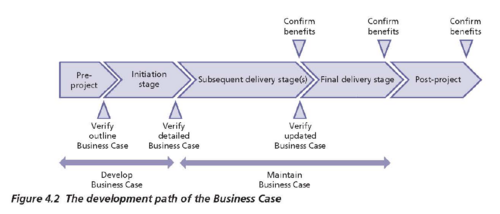Business Case
This article treats the subject Business Case within project management. The definitions of Business Case are discussed with its limitiations. Business Case is the document that defines whether or not a project is worth undertaking from the company perspective. A Business Case can be either pre-defined from a corporate level or initiated at project start. The Business Case is revisited and refined throughout the project duration. Within the initial phase of a project the Business Case is being defined and developed, but once the project progresses past the initiation stage, the Business Case is being maintained through the rest of the project. The Business Case is evaluated through a cost benefit analysis, such as a payback period or Net Present Value(NPV) which is more comprehensive compared to the payback period analysis. The article will discuss relevant tools to Business Case and the relevant responsibilities when creating or working with a Business Case. The Business case is defined by Murray,(2009)[1] as a document that presents the optimum mix of information used to judge whether a project is desirable, viable and achievable, and therefore worthwhile investing in. A similar definition for a Business Case is made by Maylor (2010) [2] ‘. . . justification for undertaking a project, in terms of evaluating the benefits, cost and risk of alternative options and rationale for the preferred solution. Its purpose is to obtain management commitment and approval for investment in the project. The business case is owned by the sponsor.’
Contents |
What is a Business Case
A Business Case is the reference point before, during, and after. A Business Case is a document that contains the justification for a Business to undertake a project as well as the value this project creates, when completed.
Types of Business Cases
Defining a Business Case
Executive Summary
Reasons
Business Options
Expected Benefits
Expected Drawbacks
Timescale
Cost
TEST TEST TEST
Investment Appraisal
Major Risks
Responsibilities
Sponsor Role
Relevant Tools
Payback Period
Net Present Value (NPV)
Limitations
References
- ↑ Murray, Andy & Co. (2009), Managing successful projects with PRINCE2, 5th edition, p. 21, United Kingdom, TSO.
- ↑ Maylor, H. (2010). Project Management, Pearson Education ltd, 4th edition, p.184, GB, ISBN: 9780273704324
References Credibility
In general using web sources a critical mindset must be used when citing these. The video referenced was made by Procurement Academy. This is a company who
Annotated Bibliography
Further reading about the template for making a Business case: http://www.projectmanagementdocs.com/project-initiation-templates/business-case.html#axzz4XoPzbU80
Murray, Andy & Co. (2009), Managing successful projects with PRINCE2, 5th edition, p. 21-28, United Kingdom, TSO.
Annotation: The book has a seven page chapter about Business Case, and describes in details how to develop it.
Maylor, H. (2010). Project Management, Pearson Education ltd, 4th edition, p.184-191, GB, ISBN: 9780273704324
Annotation: The development of a Business Case is explaned in seven pages with different examples and descriptions.
